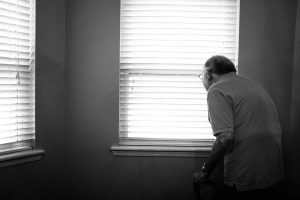Elderly adults in San Diego County nursing homes or specialized memory-care facilities often have been diagnosed with forms of cognitive impairment, including Alzheimer’s disease and other forms of dementia. When a person has cognitive impairment, the facility must take steps to ensure that they receive a certain level of care related to their condition. In other words, skilled nursing facilities have a duty to provide the type of care that is necessary based on the resident’s needs, and for residents with Alzheimer’s disease and other causes of cognitive impairment, it may be necessary to take steps to prevent wandering. When a resident wanders and suffers an injury, the facility could be liable based on a theory of negligence. Our San Diego County nursing home negligence lawyers can tell you more.
What is Wandering?
What does the term “wandering” mean in relation to nursing home care and older adults in Southern California? According to the National Council on Aging (NCOA), wandering is also known as elopement, and it refers to a situation “when someone leaves a safe area or responsible caregiver.” As the NCOA clarifies, when a nursing home resident wants, they “may not be aware of their safety, which puts them at risk of getting lost, falling, or other accidents with injuries.”
 Southern California Nursing Home Abuse Lawyer Blog
Southern California Nursing Home Abuse Lawyer Blog












